Brightness Adaptation And Discrimination
Brightness adaptation and discrimination. Intensity discrimination and its relation to the adaptation of the eye. The visual acuity of the observer is one major factor affecting brightness. This phenomenon is known as Brightness Adaptation.
The eye is just like a camera. Accumulate a history of rendered images can later save to an animation Open color overlay controls. The eyes ability to discriminate between different intensity levels is an important consideration in presenting image processing results.
The external object is seen as the camera take the picture of any object. Change mapping from values in dataset to brightness in image. This investigation has been concerned with an analysis of brightness discrimination as it is influenced by the duration of ΔI.
Discriminating the degree of brightness however depends on the visual acuity of the observer the wavelength of light and the sensitivity to light and color as perceived. On the order of 17. An analysis of brightness discrimination as it is influenced by the duration of ΔI where ΔII values at constant intensity are highest for the shortest duration and decrease with an increase in duration up to the limits of a critical exposure time.
PMC free article Google Scholar Wright WD. The method of magnitude estimation was used to investigate how the level of adaptation affects the power function relating brightness to luminance. The fact that eyes can operate only on small range can be proved.
CONTD Brightness discrimination is the ability of the eye to discriminate between changes in light intensity at any specific adaptation level. PMC free article Google Scholar. Brightness Adaptation and Discrimination.
BRIGHTNESS ADAPTATION AND DISCRIMINATION Range of light intensity levels to which HVS human visual system can adapt. On the order of 1010 _ from the scotopic threshold to the glare limit.
Lennie P.
The eyes ability to discriminate between different intensity levels is an important consideration in presenting image processing results. Intensity discrimination and its relation to the adaptation of the eye. On the order of 1010 _ from the scotopic threshold to the glare limit. Render new image immediately when a control is changed. 213 Brightness Adaptation and Discrimination Because digital images are displayed as a discrete set of intensities the eyes ability to discriminate between different intensity levels is an important con-sideration in presenting image-processing resultsThe range of light intensity lev-. The breakdown of a colour match with high intensities of adaptation. Brightness Adaptation and Discrimination. Name of underlay dataset. The long solid curve represents the range of intensities t o which the visual system can adapt.
On the order of 1010 _ from the scotopic threshold to the glare limit. This phenomenon is known as Brightness Adaptation. The range of light intensity levels to which the human visual system can adapt is enormouson the order of 1010 from the scotopic threshold to the glare limit. Intensity as perceived by the HVS is a logarithmic function of the light intensity incident on the eye. Render new image immediately when a control is changed. On the order of 17. Brightness Adaptation and Discrimination.


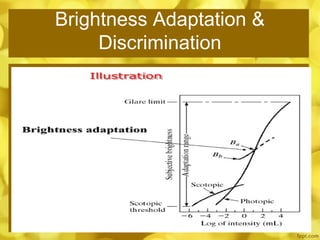

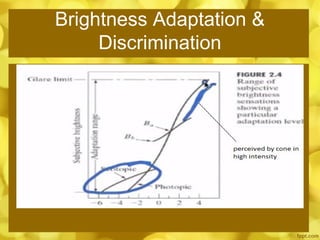

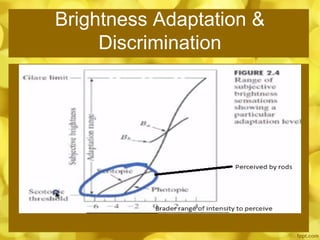











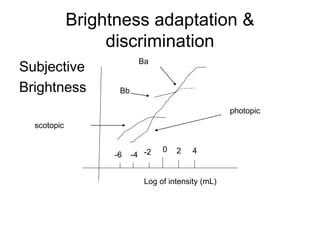







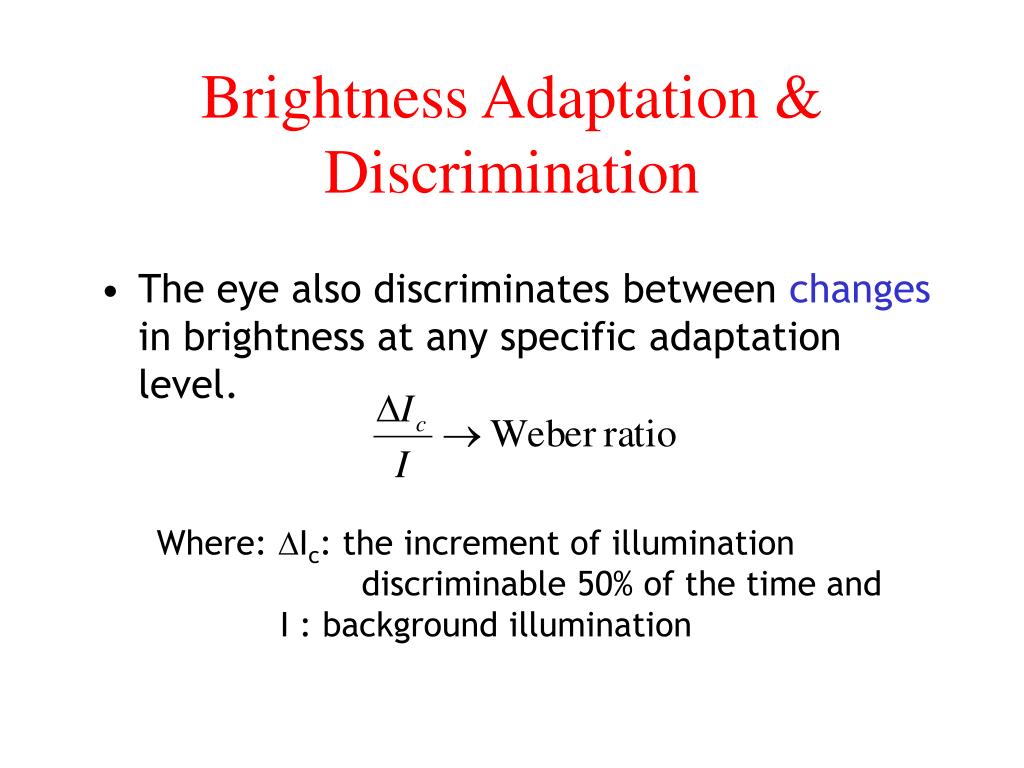
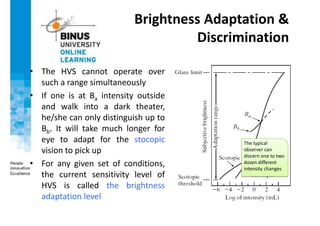



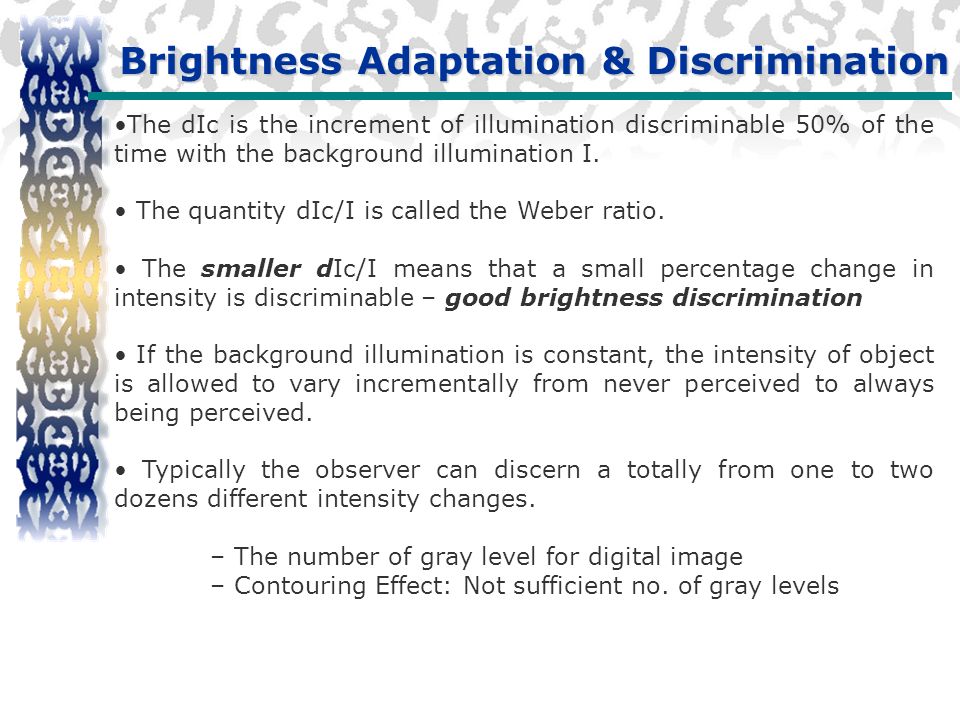







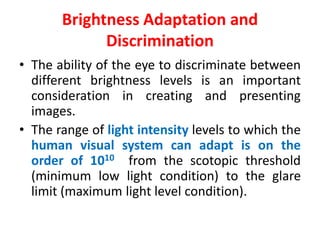



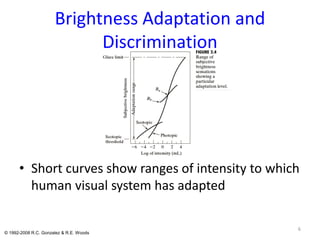
Post a Comment for "Brightness Adaptation And Discrimination"